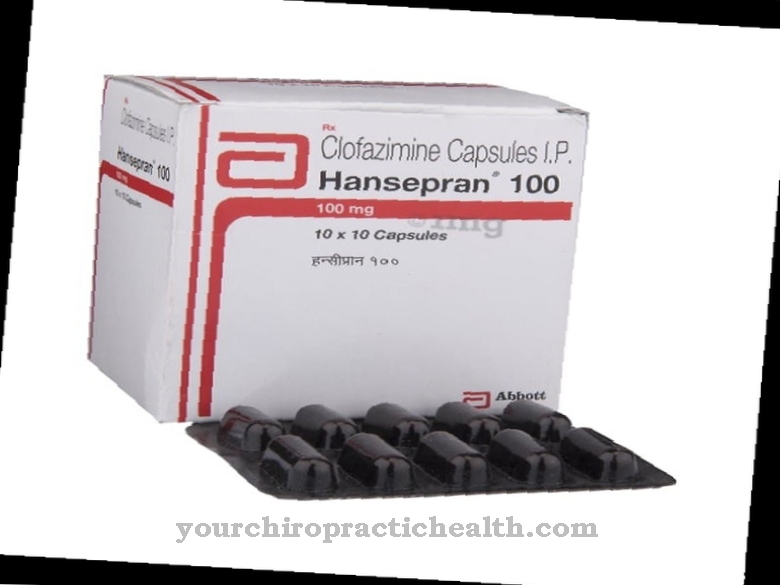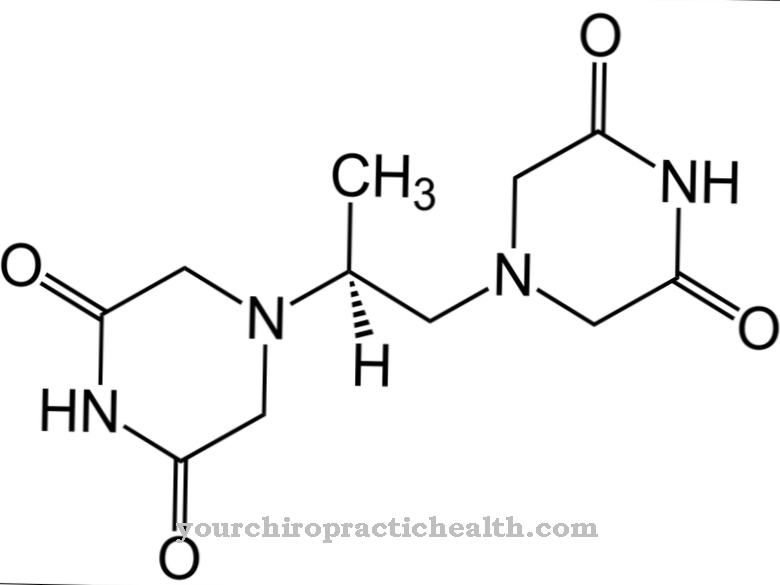Maprotiline is one of the antidepressants. The drug is used to treat depressive illnesses.
What is maprotiline?

Maprotiline is a tetracyclic antidepressant (TCA). Antidepressants are drugs that can be used to effectively treat depression. But they can also be used for other mental illnesses such as panic disorders or chronic pain.
Tetracyclic antidepressants such as maprotiline are a further development of tricyclic antidepressants. For example, within their chemical structure they have four carbon rings instead of three rings.
Maprotiline, that too Maprotilinum or Maprotiline hydrochloride has been used in Europe since the early 1970s. Psychiatry uses the drug to treat depression. In Germany it is sold under the product names Maprolu® and Ludiomil®.
Pharmacological effect
Maprotiline has the property of acting on the central nervous system (CNS). It ensures the inhibition of noradrenaline reuptake from the synaptic cleft. The inhibition of the neurotransmitter serotonin, on the other hand, is hardly worth mentioning. In this way, an anxiety-relieving and drive-increasing effect is achieved.
In the initial stage of treatment there is a weakening of adrenaline and histamine in the nervous system, which has an arousal-depressing and calming effect. After a few weeks of treatment, however, this effect is increasingly replaced by mood enhancement and increased drive.
The anticholinergic effect of maprotiline can hardly be proven. It is considered to be more beneficial than tricyclic antidepressants, as the vegetative nervous system is less affected by undesirable effects.
A disadvantage of the maprotiline effect is that the antidepressant can also bind to adrenergic receptors, serotonin receptors and histamine receptors. This increases the likelihood of various undesirable side effects. Compared to tricyclic antidepressants, however, they are weaker.
Maprotiline can also act as a FIASMA. It is a "functional inhibitor of acid phosphomyelinase". Maprotiline is taken orally, intravenously or intramuscularly. The bioavailability of the active ingredient reaches up to 90 percent. Up to 88 percent of it is bound to plasma proteins in the blood. Maprotiline is metabolized by the liver. On average, its plasma half-life reaches 36 hours. The active ingredient is then broken down through the liver and kidneys.
Medical application & use
Maprotiline is given to treat depression, dysphoria or anxiety disorders. The medicinal substance serves to counteract depressive moods and alleviate fears and states of excitement. Another area of application of maprotiline is somatic or psychosomatic complaints that are associated with anxiety disorders.
Maprotiline is usually taken in the form of film-coated tablets with a little water. The usual daily dose is 1 to 3 tablets containing 25 to 75 milligrams of maprotiline hydrochloride. The daily dose can also be given as a single dose in the evening hours.
Depending on how the patient tolerates maprotiline, the dosage increases after two weeks by another film-coated tablet per day until the patient takes two to three tablets a day. The maximum recommended dose is six tablets a day. If the symptoms improve, the patient gradually reduces the dose to one or two tablets per day.
How long the treatment with maprotiline lasts varies and is decided individually by the doctor. It usually takes 4 to 6 weeks for the antidepressant to take effect.
You can find your medication here
➔ Medicines against depressive moods & to lighten the moodRisks & side effects
The use of maprotiline can cause side effects in some patients. In most cases, these include dry mouth, dizziness, drowsiness, tiredness, nausea, vomiting, hot flashes, headaches, problems urinating, constipation, weight gain, insomnia, nightmares, visual disturbances, anxiety and aggressive behavior. Disorders of sexual potency and loss of libido are also possible.
Some patients may experience major side effects, but these are very rare. These include conduction disorders in the heart, fluctuations in blood pressure, seizures, vasculitis, gynecomastia, manic or psychotic states, hallucinations, liver damage, blood disorders or inflammation of the liver (hepatitis).
If the patient is hypersensitive to maprotiline or other tetracyclic or tricyclic antidepressants, the agent must not be administered. The same applies to severe kidney and liver dysfunction, mania or psychosis, acute drug or alcohol poisoning, a tendency to seizures, intestinal paralysis, glaucoma, constrictions within the gastrointestinal tract, enlargement of the prostate, which is associated with urinary flow disorders, as well as severe irregular heartbeat.
During pregnancy, the use of maprotiline should only be administered after the doctor has carefully assessed the risk and benefit. Damage to the unborn child by the active ingredient cannot be completely ruled out. There is also a possibility that maprotiline will pass into breast milk while breastfeeding. This can also affect the baby's health. The administration of maprotiline is not suitable for children.
Simultaneous use of maprotiline and MAO inhibitors is problematic. Since there is a risk of serious side effects, it should not be used at the same time. Interactions are also possible through parallel therapy with maprotiline and other tetracyclic or tricyclic antidepressants. In this way, the effects of the funds can mutually increase. The effects of maprotiline are increased by the administration of cimetidine, methylphenidate or neuroleptics. In addition, simultaneous treatment with neuroleptics increases the risk of seizures.



























